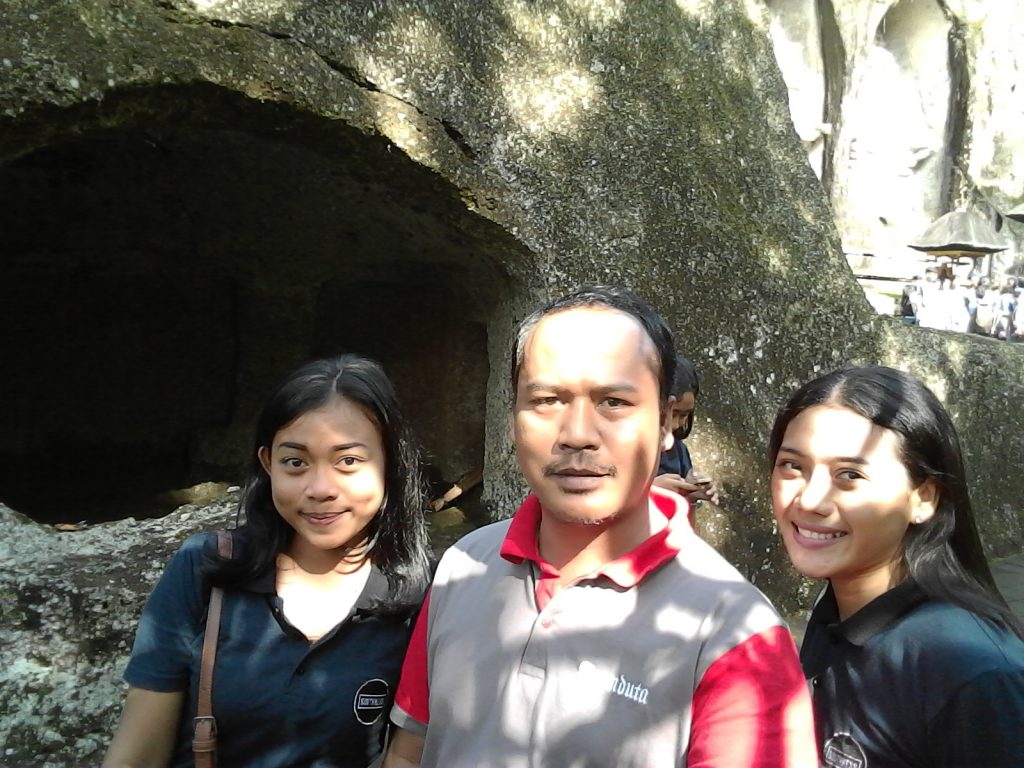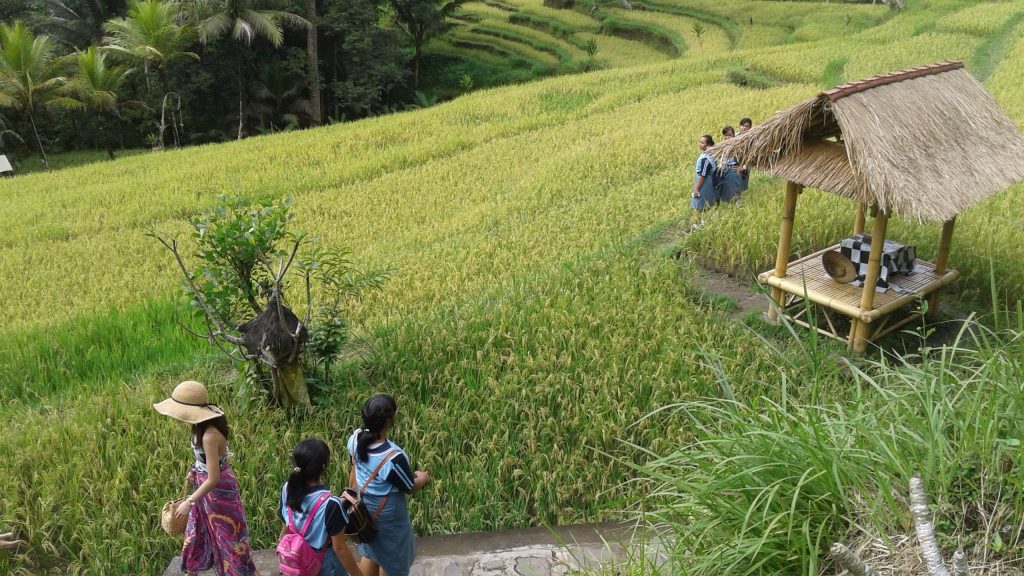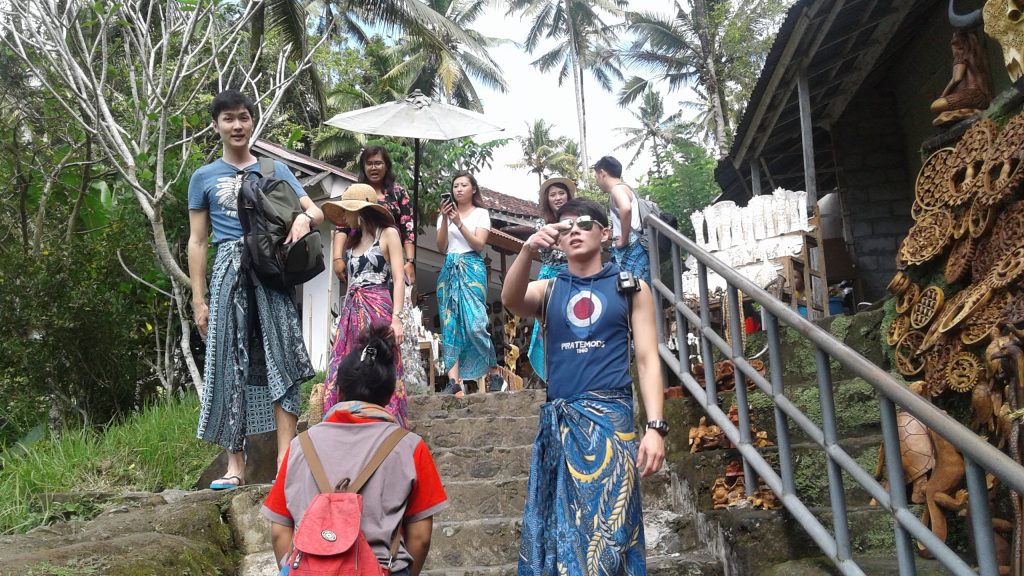Gunung Kawi Temple is located in Gianyar regency, located close to Tirta Empul tourism objects. To reach this location, you have to walk from the parking lot, down quite a lot of stairs. Around the road to this attraction there are already many fruit stalls and souvenirs that you can buy when returning from Gunung Kawi Temple. The rice fields around the slopes are also very interesting, many local tourists take their time to take pictures in the beautiful rice fields here.
Entering the temple area on the left you will begin to see the beauty of the cliff temple carvings in this place, it is amazing, there are also small cave caves in this place, maybe they used to be meditating and also to place ceremonial tools to be safe and protected from rain.
Then you can continue the journey through the existing bridge to the location of the more temple in the east of the Pakerisan river.
The Tebing Gunung Kawi Temple is thought to have been built since the mid-11th century AD, during the Udayana (Warmadewa) dynasty. The construction of this temple is expected to begin during the reign of King Sri Haji Paduka Dharmawangsa Marakata Pangkaja Stanattunggadewa (944-948 Saka / 1025-1049 AD) and ended in the reign of King Anak Wungsu (971-999 Saka / 1049-1080 AD).
In the Tengkulak Inscription, which dates from 945 Saka (1023 AD), there is information on the banks of the Pakerisan River, there is a hermitage complex called Amarawati. Archaeologists argue, Amarawati refers to the area of the Gunung Kawi Cliff Temple.
Layout, the ten temples are scattered in three points. Five of them are on the east side of the Tukad Pakerisan River, while the rest are scattered in two points on the west side of the river. Five temples on the east side of the river are considered as the main part of the Gunung Kawi Cliff Temple complex.
On the north side of the west side of the Tukad Pakerisan River, there are four temples lined up from north to south and facing the river. Meanwhile, one other temple is on the south side, approximately 200 meters from the four temples.
Historically, King Udayana and Empress Gunapriya Dharmapatni had three children, namely Airlangga, Marakata, and Anak Wungsu. The eldest, Airlangga, was later appointed King of Kediri to replace his grandfather, Mpu Sendok.
When Udayana died, the throne was handed over to Marakata – which was then passed on to the Wungsu Son. Tebing Gunung Kawi Temple Complex was originally built by King Marakata as a place of worship for the soul of the father, King Udayana.
Among the ten temples in this region, it is estimated that the first building to be built is the most northern temple from a series of five temples to the east of the river. This is based on the writings of “Haji Lumah Ing Jalu” beraksara attended quadratic at the top of the temple gate.
This article means ‘the king is buried in the jalu (Sungai Tukad Pakerisan)’ which indicates that this temple was built as a place to worship the soul of King Udayana. The other four temples in this series are allegedly built for the empress and children of King Udayana.
Meanwhile, four temples are on the west side, according to archaeologist Dr. R. Goris, possibly a temple (padharman) dedicated to the four concubines of King Udayana. Whereas, another temple whose position was more south was allegedly built for one of the high-ranking kingdom officials or the king’s advisor.
From some historical references in that era, the existence of this temple can be attributed to the figure of the Guru Kuturan. The Kuturan master is the envoy of King Airlangga for his younger brother, Raja Anak Wungsu. Later, the Master of Kuturan was appointed as the king’s main adviser and had an important role in the development of the Bedahulu Kingdom.
The entire temple complex is functioned as a temple, a means of worshiping the royal family by King Anak Wungsu. Interestingly, around this Hindu temple there are a number of niches that archaeologists have identified as Buddhist meditation places / monasteries.
These niches are carved into a cliff wall, just like Hindu temples in the vicinity. The existence of the Hindu temple complex adjacent to the Buddhist hermitage shows the Former Kingdom when it had implemented tolerance and harmony in religious life.









0 Comments